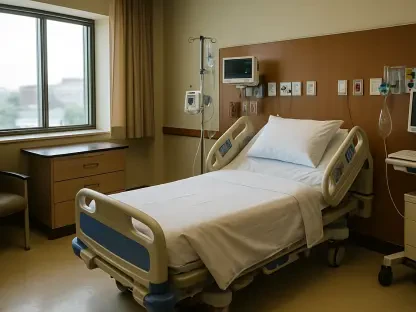In the rapidly evolving landscape of healthcare, schemes like Karnataka’s Yeshasvini have been pivotal in extending quality services to underserved areas. James Maitland, an expert in healthcare technology applications, has closely observed these changes and shares insights on the proposed overhaul of the scheme, which aims to modernize its operation and expand its reach.
What prompted the committee to recommend a rate hike of up to 50% for certain medical procedures under the Yeshasvini Health Scheme?
The primary motivator for the rate hike recommendation stems from the need to align with current market rates, especially for high-end procedures that have seen significant advancements. This alignment is essential to incentivize private hospitals to join the scheme, thereby increasing access for patients to quality healthcare services they might otherwise find prohibitive.
Can you elaborate on the types of highly complex treatments that will see a 50% rate increase?
The procedures seeing a substantial rate increase are typically those involving advanced technology and specialized skills, such as pediatric heart surgeries, oncology treatments, neurosurgery, and interventional radiology. These areas are crucial as they directly impact life-critical cases and require the utmost precision and expertise.
How did the expert committee conduct its review over the past six months, and who were the key contributors?
The review was comprehensive, involving multiple meetings and consultations with leading medical professionals and healthcare industry stakeholders. The diverse expertise of these contributors helped ensure that the proposed revisions reflect a balanced perspective on both economic and healthcare quality considerations.
What criteria were used to decide on a 15% to 25% rate hike for most procedures?
The criteria focused on bridging the gap between outdated reimbursement rates and current operational costs. Factors considered included inflation, technological advancements since the last pricing update, and comparative regional healthcare costs, ensuring that the hike supports both provider sustainability and patient affordability.
What factors influenced the committee to add 69 new procedures and remove six outdated ones from the scheme?
Adding new procedures was largely influenced by evolving medical standards and emerging healthcare needs. Conversely, the removal of outdated procedures was driven by advancements in medical practices that rendered some older methods obsolete, ensuring the scheme remains relevant and effective.
How do the proposed rate changes aim to increase private hospital participation in the Yeshasvini Health Scheme?
By updating the reimbursement rates, the scheme intends to offer financial viability to private hospitals, encouraging them to join. The participation of these hospitals expands the healthcare network, facilitating broader access for patients to a range of services across Karnataka.
Were there any significant challenges in engaging private hospitals, and how does the proposed revision address these issues?
The main challenge has been the low reimbursement rates, which did not cover the actual costs for many complex procedures. The proposed revisions address this by offering more competitive rates, thus aligning the scheme’s reimbursement with the present-day cost of delivering high-quality healthcare.
Could you explain the financial implications of the revised rates for cooperative members and potential impacts on their access to healthcare?
The revisions intend to maintain affordability for cooperative members while expanding their options for treatment. The increase in costs must be judiciously balanced against the benefits of improved service quality and access, ensuring that members continue to receive value through better healthcare outcomes.
With the anticipated rise in costs to ₹127.5 crore, how does the committee plan to secure the additional ₹40 crore funding?
The committee is likely exploring a combination of governmental budget allocations, strategic partnerships, and community contributions. Securing these funds efficiently is crucial to sustaining the operational improvements and financial health of the scheme without overburdening its beneficiaries.
How does the committee envision the rate revision impacting the quality of care provided to rural populations?
The revised rates are expected to significantly enhance care quality by attracting more skilled practitioners and advanced facilities to participate in the scheme. This would provide rural populations with better access to specialized services that may have been previously unavailable or financially unreachable.
In what ways does the rate rationalization plan align public insurance with realistic cost structures?
By updating the reimbursement rates, the plan seeks to ensure that public insurance schemes like Yeshasvini mirror the true cost of contemporary medical care. This alignment is critical for sustainable healthcare delivery, ensuring that all parties—patients, providers, and insurers—operate on a viable economic foundation.
How might this revamp of the Yeshasvini scheme set a precedent for other public-private health insurance models across India?
If successful, the revamp could demonstrate a practical model for integrating private and public healthcare efforts, showcasing how collaborative reforms can enhance service accessibility while maintaining economic viability, which could inspire similar strategies nationwide.
What has been the historical impact of the Yeshasvini Health Scheme since its launch in 2003, and how does this reform aim to enhance its legacy?
Historically, the scheme has been instrumental in providing affordable healthcare to rural communities. The reforms aim to build on this legacy by modernizing its coverage to meet current and future healthcare demands, thereby continuing its role as a benchmark for cooperative health schemes.
When can the public expect the government to make a decision on the proposed changes to the scheme?
The government is anticipated to evaluate the committee’s recommendations and make a decision within the coming weeks, taking into account potential impacts and logistical considerations to ensure a smooth scheme transition.
Are there plans to monitor the effectiveness of these changes in attracting more hospitals and improving healthcare quality?
Yes, monitoring frameworks are likely to be put in place to assess not only hospital participation rates but also improvements in healthcare delivery and patient satisfaction. This ongoing evaluation will be pivotal in making necessary adjustments and ensuring the long-term success of the reforms.









